Let’s Learn from Zinc Studies this Growing Season
We are rapidly coming upon spring. And for many in the pecan industry, that means zinc. Pecans are uniquely sensitive among nut crops in their susceptibility to zinc deficiencies. This might be a consequence of a higher zinc requirement than some other plant species. Or perhaps it’s due to the kinds of soils that we...
Read more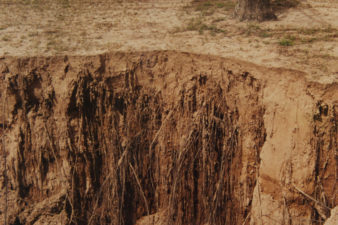
Pecan Roots—A Sight Unseen
Our eyes are one of our best tools for learning about our trees. It’s a relatively simple thing to see what’s going on in a tree canopy, but it’s a much more difficult process to see what’s going on underground with the tree’s root system. More than that, usually, when we look at roots, we...
Read more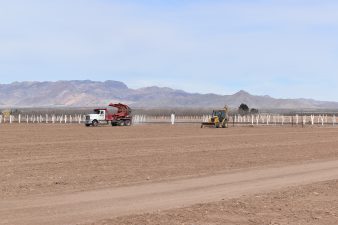
Alternate Bearing Considerations for the West
Some fruit and nut tree species are famous for their alternate bearing, their tendency to swing back and forth every other season between really heavy (‘on’) crop loads and really light (‘off’) crop loads. You can see this kind of thing with apples, citrus, pistachios, olives, and avocados, among others. And, of course, you can...
Read more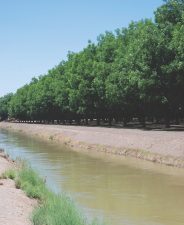
Deep Percolation—One of Irrigation Water’s Forgotten Fates
Whenever you irrigate your pecan orchards, there are really five distinct fates for that water. “Fates” probably sounds a bit too ominous, but that’s not the intent—maybe think about this as five different “destinies” or outcomes for the water. Here they are. Fate #1) The applied irrigation water could be taken up by the pecan...
Read more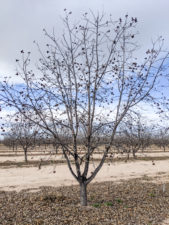
Pruning Sets You Up for Success
Do you know what practice impacts pecan development most and is performed mainly during the dormant season? You got it! Pruning. When observing a native pecan, what’s evident is the tree’s natural habit of developing a central leader limb through the canopy. This strong central leader supplies the support for the scaffold branches holding most...
Read more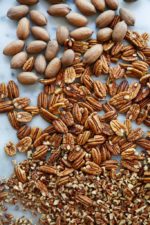
What’s Affecting My Crop’s Nut Quality?
At harvest there is always a lot of interest from growers and buyers alike in the final quality of the pecan nuts. Nut quality is a super complicated topic because it involves a lot of different characteristics of the nuts themselves and because it is influenced by a broad and complex range of factors over...
Read more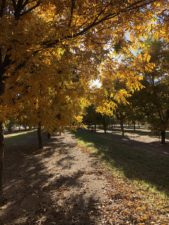
Advice for Late-Season Orchard Floor Management
In the West, pecan growers are increasingly using an orchard floor management system where a “mow strip” is maintained in the driving lanes between the tree rows, and a 6- to 8-foot wide vegetation-free strip is kept in the tree row (3 to 4 feet on either side of the row). In conventional orchards, a...
Read more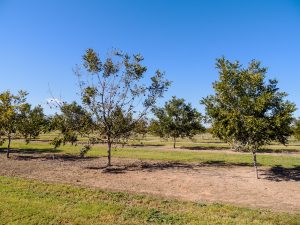
Can’t diagnose by symptoms alone
Diagnosing a disorder is a process that involves critical evaluation by a team of experts. This team includes the pecan producer, orchard owner, certified crop consultant, pest control advisor, farm manager, Extension agents, state specialists appointed by the university, and a diagnostic clinic or laboratory. The combined evaluations by the team of experts require a...
Read more
It’s time for leaf tissue analysis for pecans
It’s about that time in the season for us to start thinking about collecting leaflet tissue for nutrient analyses. During this time each season, every grower has to ask, “How much fertilizer should I apply in my pecan orchard?” Annual leaf tissue analyses are currently the best thing out there to get a true answer....
Read more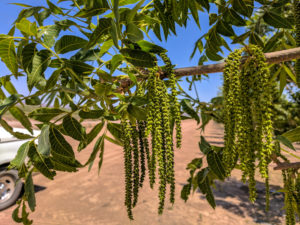
The pecan’s journey from flowering to nuts
It’s that time! Have you seen them? Most of you reading this probably so, but I’ll bet that the majority of the world has not seen pecan flowers. I used to think those long “tassels” hanging from the trees were somehow just part of the leaves. Those “tassels,” or to botanically correct the catkin, are...
Read more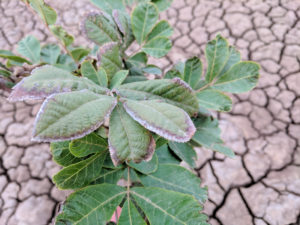
Intensive cultivation in saline soil conditions
Over about six years now and the successful planting of 406 pecan seedlings of seven different cultivars at our University of Arizona Safford Agricultural Center, I am encouraged and enlightened by the observations and results so far that have come out of the research project. More pecan producers than just Arizona producers contend with the...
Read more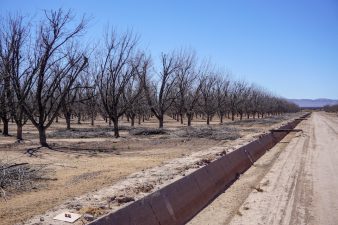
Salinity management considerations ahead of planting
Salinity is a major and growing concern in pecan orchards across the western United States. Although salinity is always a potential issue in irrigated agriculture, drought has really moved it to the forefront for many areas. What do growers need to look at ahead of planting a pecan orchard? One of the most important things...
Read more
The end of the growing season means preparing for winter
Recently I had a discussion with some colleagues about when the pecan growing season actually ends. That might seem like a very simple question to answer for a grower: harvest is the end of the growing season. True enough. But from the tree’s perspective, when is it really over? When has the dormant season truly...
Read more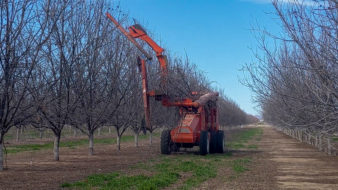
Plant hormones’ post-pruning balancing act
At the Arizona Pecan Growers Association’s Conference at the end of August, three local producers gathered for a “Grower’s Panel,” during which they explained their hedging and pruning programs. These producers used video and PowerPoint slides to further expound on their discussion. I remember one of the producers mentioned, “The pecan trees get used to...
Read more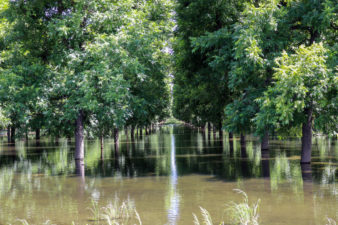
On-Farm Recharge on orchard replenishes groundwater
On-farm recharge is the application of available surface water to farmlands during wet years to recharge and store water in underlying aquifers for future use. Pecan orchards are especially suited to on-farm recharge because pecans are a facultative upland species able to tolerate saturated soils post-dormancy. We conducted an on-farm recharge (OFR) demonstration study on...
Read more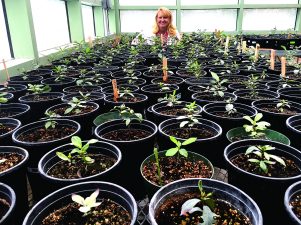
The importance of pecan rootstocks for semi-arid regions
Why are rootstocks necessary in pecan? The answer to this question is that they actually aren’t necessary at all. Pecan trees can be grown from seed and planted without grafting. Without grafting you don’t have a rootstock per se. The catch, though, with ungrafted seedling pecan trees is you don’t know exactly what you’re going...
Read more
Essential elements in pecan
In the early 20th century, scientists Daniel Arnon and Perry Stout, through the inspiration and guidance of the renowned laboratory of plant nutrition founded by Dr. Hoagland at the University of California Berkley, determined the criteria that would ultimately ascertain if an inorganic mineral was required within a plant to be deemed an “essential element.”...
Read more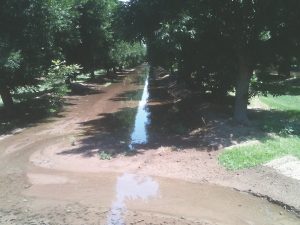
The Downsides of Overwatering Pecans
When it comes to irrigation scheduling, we tend to talk most often about how important it is to make sure that irrigation water is applied in sufficient volumes and frequently enough to meet the consumptive demand or evapotranspiration (“ET”) of our pecan orchards. And there is no doubt that that is a really big deal!...
Read more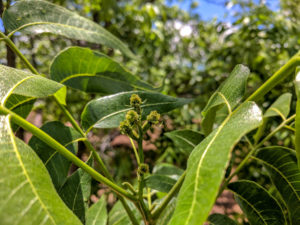
Before the nut—pecan flowering and pollination
As I am writing this in April, most pecan shoots around the western pecan production regions are expanding their leaves as flowering begins. Soon, now in May, the tiny promiscuous flowers will emerge and become receptive to the pollen floating in the wind. I have always been interested in how male and female flowers form...
Read more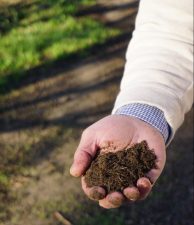
How to increase the soil organic matter in your pecan orchard
Many of you will soon receive the lab analysis results of your winter-time soil samples. If you haven’t already collected your soil samples, let me encourage you that it might not be too late in early March to do this. However, I would recommend that you do it before you start applying fertilizers for the...
Read more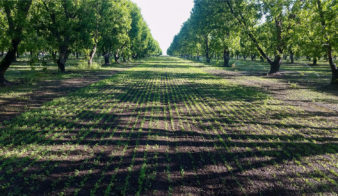
Cover Crops—Cover up out there!
I have always wondered how many of us in the pecan industry utilize cover crops. Has there ever been a survey on this topic specifically for pecan production operations? I haven’t found any in my search, but there probably hasn’t ever been a formal one conducted across the entire pecan production belt. I bet if...
Read more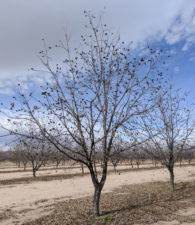
Pecan Winter Activities for Western Orchards
After the dusty whirlwind of harvest passes, outsiders may easily think it’s finally time to take a little break from pecan orchard activities. There is a certain amount of truth in that. After all, the trees are dormant. It looks so quiet and peaceful. The constant hum of zinc sprays, irrigation, insect pest control, and...
Read more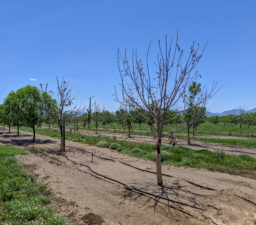
Analyzing the 2019 Freeze’s Impact on the West
As I am typing away to write this article, I can’t help but think of all of your faces. All of us out there are still enduring these new norms. I think of everyone and send a prayer that you are staying safe and healthy during these trying times, but I also pray that you...
Read more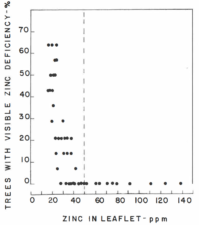
Pecan Zinc Deficiency Linked to Leaflets’ Zinc Levels
LEAFLET ANALYSIS is widely used by pecan growers to determine the Zn (zinc) status of their pecan trees. In most diagnostic laboratories, the zinc concentration of the leaflet of 50 to 100 or 60 to 100 parts per million zinc is considered sufficient. 1,4,10 Pecan trees with less than 20 ppm Zn in the leaflets...
Read more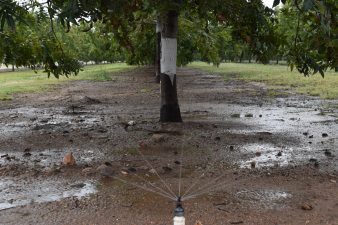
Micro-Irrigation versus Flood Irrigation
Basin flood irrigation remains popular in some of the traditional pecan growing areas of the western region, but increasingly producers are making use of micro-irrigation. Recently I wrote an article in Pecan South about timing your irrigation events if you are using a basin flood irrigation system. In this article here, I will compare and...
Read more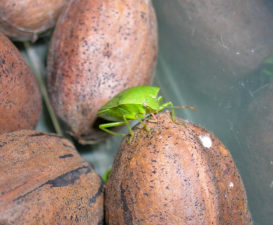
Monitoring Stink Bugs, an Annual Pecan Pest
Stink bugs are serious, annual pests of pecan. Their feeding on developing nuts before shell hardening leads to “black pit” of the embryo and nut abortion. After the shell hardens, damaged nuts remain on the tree and are harvested. Stink bug feeding injury on nuts with hardened shells and mature kernels usually is indicated by...
Read more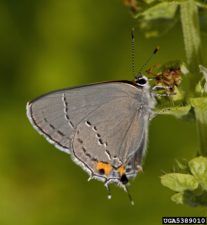
Pesky Pest, But Not a Threat
Adult Gray Hairstreak, Strymon melinus. Credit: David Cappaert, Bugwood.org.“Have you seen this before?” A common question that arises in early Spring as buds break and leaves unfold and development ensues. In late May and June, some pecan producers may even encounter nutlets with a tiny hole chewed out of it on one side. I wanted...
Read more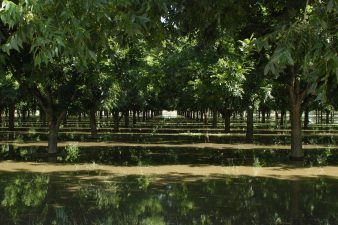
Your Pecan Tree’s Piggy Bank & Water Budgeting
As we move into the 2020 growing season, we should take some time to discuss how to know when to irrigate and how to know how much water to apply—irrigation scheduling. There are several different methods that growers can use to schedule irrigations, some better than others. Some producers may prefer the completely non-scientific approaches,...
Read more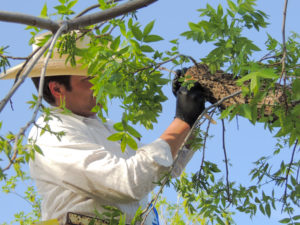
Successful Grafts Take a Careful Craft
Successfully grafting is a meticulous process that requires the producer to develop their craft. Before embarking on this mission, one should consider some essential factors when grafting or budding to propagate a pecan tree. Depending on the pecan growing region, orchard design, or planning phase, the pecan producer will choose a rootstock first—based on its...
Read more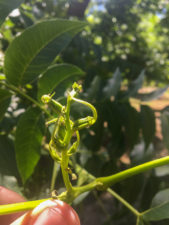
Don’t Forget About Zinc!
As we move into March and the spring weather it brings, here in the West we anticipate the arrival of budbreak and bloom. At this time of year, we’ve been able to finish all the necessary jobs associated with dormancy. Trees have been hedged and topped, necessary soil amendments have been applied, and if we’re...
Read more
Training Pecan Trees, Setting Some Limits
From the words of late Chris Blanchard, creator of the “Farmer to Farmer” podcast and a MOSES Organic Farmer Conference organizer, “Farms are like two-year-olds. They’re very loud and very insistent about what they need and what they want. If you don’t set some limits, you’re going to be a slave to the two-year-old.” If...
Read morePecan Trees Prepare to Face Winter Head-On
Winter can be horrible news for plants, even here in the “balmy” Southwest. The days get shorter and sunlight intensity decreases as we approach winter, making photosynthesis tougher and tougher. In addition, plants have no choice but to slow all activities way down as temperatures dip, since the rates of a plant’s metabolic processes are...
Read more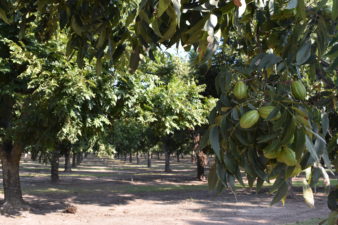
Before Harvest, Consider This
November means it’s time for harvest throughout the entire pecan industry. While some growers in the Southeast have been picking nuts for nearly two months, those of us out here in the West are just getting going. ‘Pawnee’ will have been ready for a little bit, while most other varieties are just finishing up and...
Read more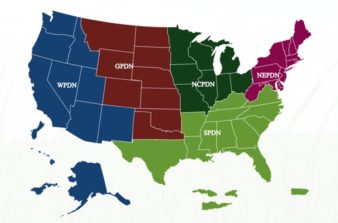
Accurate Diagnosis is Critical
Examine the rows upon rows of mature pecan trees in your orchard. Tall, sturdy with a full canopy, these trees may look close to perfect to an unfamiliar observer. But like with almost everything in life, once we enter the orchard, once we stand beneath the canopy, and once we look close enough at these...
Read more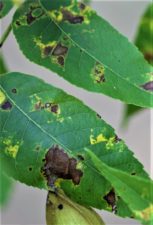
Pecan Aphids, Part III: A Different Approach to Managing the Black Pecan Aphid
The first and second articles in this series on pecan aphids focused on the distribution of the three aphid species (blackmargined aphid, yellow pecan aphid, and black pecan aphid) on pecan foliage and their feeding biology. An emphasis was placed on how the black pecan aphid conditions foliage at feeding sites by eliciting chlorotic zones,...
Read moreChallenges and Tricks to Growing Pecans in California
Out here in California, we’re relative newcomers to the pecan industry. There are some smaller plantings that were planted in the late ‘50s and ‘60s, but most of the commercial plantings didn’t start going in until the mid-1970s. And the state’s largest orchard wasn’t planted until 1980. With that being the case, we’ve had the...
Read more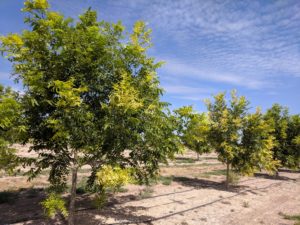
Iron—Essential to Humans and to Pecans
All of us at some point in our attendance at various pecan industry events across the Pecan Belt have heard discussions of essential elements that are required by plants and especially those required to successfully grow pecan trees with relatively optimal yields, even though there may be some differences depending on the region where they’re...
Read more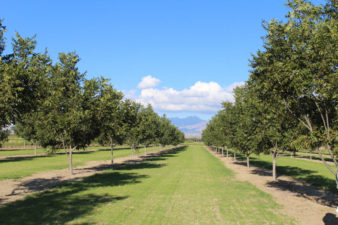
Take your head out of the canopy, focus on the orchard floor
Although the goal of a grower’s orchard operation remains the same—to produce and sell the best pecans—the steps a grower takes to create the perfect crop changes as an orchard’s needs, scientific recommendations, and the seasons change. Oftentimes, a producer may find themselves so focused on the details of management that they forget about how...
Read more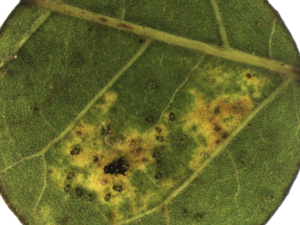
Pecan Aphids, Part II: Feeding Biology
In the first of this three-part series on the pecan-feeding aphids (March 2019), I covered how different aphid species distribute on pecan foliage. At the end of that article, we questioned why nymphs of the blackmargined pecan aphid and yellow pecan aphid favor the underside of the pecan leaf, but a proportion of black pecan...
Read more
June’s the time to get it right!
June is generally accepted as the start of summer. Out in the West, some years feel like summer starts at the end of May and continues through to Halloween. June is also the beginning of the most critical phases of our growing season. We have made it through budbreak and pollination, hopefully without incident, and...
Read more
Pecan Flowering: Genesis of the Nut
One thing is for sure, just when you think you have something figured out, nature will turn around and show you differently. In my position thus far, I find myself making recommendations all the time, but I often have to remind myself not to make too specific generalizations for doing things one way across all...
Read more3 Steps to Diagnose Unknown Disorders in Your Orchard
I’m sure every single one of you has come across one of those “mystery problems” in your pecan orchards. I’m not talking about the simple, everyday stuff that you already can easily diagnose. I’m talking about those trees that just aren’t growing normally. Or maybe that corner of the orchard where all the leaves are...
Read more
Family Trees: Looking back, Going forward
Every grafted pecan tree is full of stories that can be confusing to someone not involved in the pecan industry. I want to tell the origin stories of three cultivars: ‘Western’ (the most important scion cultivar for the western region), ‘Riverside’ (an important rootstock cultivar for the West), and ‘Longfellow’ (which has recently been confirmed...
Read more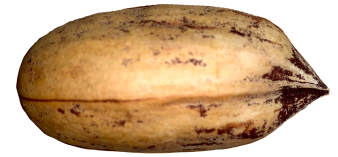
New Plantings Require a Few Variety Considerations
At the top of some pecan producers’ minds right now is the preparation for new orchard plantings. It’s probably a little late now to change this year’s order for nursery trees, but here are some important considerations when you’re deciding on a cultivar mix for your new plantings in the western growing region. History ...
Read more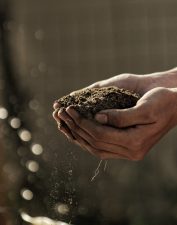
The Soil is Alive
If you eliminate the other environmental factors (i.e., water, light, temperature), it could be agreed that growing an optimum crop with maximum yield potential is ultimately limited by the health and condition of the soil. This is especially true when your crop is a perennial crop like our pecan tree. After all, a healthy soil...
Read moreReflect, Recognize, Resolve
The end of December is always a time of personal retrospection, looking back on the year to see what went as planned and what didn’t; what was accomplished and what wasn’t. It’s a time to think about ways we did things just right or mistakes we made and how we’re going to make next year...
Read more
Colors of Fall, Colors of Health
Before I get into writing on another topic in pecans here, I want to take a moment and extend my deepest sympathy to our pecan friends who may have been injured or even worse affected by Hurricane Michael that swept through the lower southeastern pecan production region last month. One thing for sure, we all...
Read more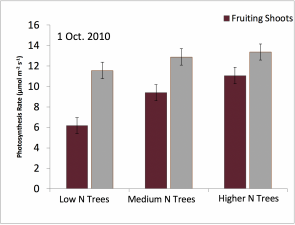
Macronutrients: Keep the leaves healthy to feed the kernels
The two months or so leading up to nut maturity that we are now in are an extremely active period for a pecan tree. We will see the fruit make a transition out of the water and gel stages into the kernel fill stage. And then during this important stage of nut development, the seed...
Read more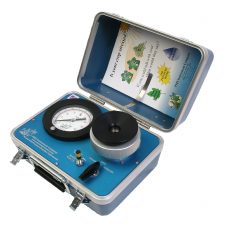
No Holding Back, Good ‘Ole H20
Let’s face it. Fruiting is a high-stress event for any tree. If there are other stresses compounding this event, either this year’s fruit quality or next year’s performance will be impacted significantly. As a perennial crop, ultimately what you do this year sets that crop up for success or failure next year. However, there are...
Read moreWhat’s the Scoop on Nitrogen?
Nitrogen is a “building block” of a vast array of plant biochemicals. To farm pecans successfully, you probably don’t need to know the names of all of these, but you’ve definitely already heard of some of them: – amino acids and proteins: including enzymes that make all of the biological processes in the plant actually...
Read moreGrafting—Some Kind of Magic
In my experiences so far in the pecan industry, I have had the pleasure of meeting many fine folks with some outstanding skills. I just returned from the Western Pecan Growers Conference and added new friends to my contacts. It is fascinating to observe the many diverse skills some of us may acquire along our...
Read more
Salinity, Another Key to Orchard Management
If you’re going to grow pecans in the southwestern states you’ll need to irrigate. That’s a given. Every time we irrigate, though, we’re adding more than just water. Every time we irrigate, we’re adding some amount of salt to the soil along with the water. It might just be a little bit of salt or...
Read moreTraining Pecans for Performance, Perseverance & Productivity
Training is the act of teaching or developing skills and knowledge related to a specific competency, thus improving one’s capability, capacity, performance, steadfastness, and productivity. In this respect, I would like to write here on training the young pecan tree, as I think that is what most may be doing this time of year. Although...
Read more
Not Just Cotton, Not Just Roots, Cotton Root Rot Affects Pecan Trees
Compared with our pecan-growing friends in the humid central and eastern production areas, we in the western states, fortunately, have very, very few plant disease issues that we struggle with on a regular basis in our pecan orchards. Sometimes I’ll even hear folks say that we don’t have any pecan diseases out here because it’s...
Read more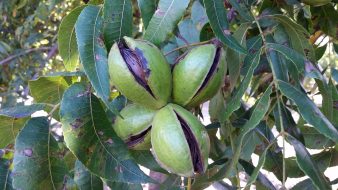
Shuck Split is Pecan’s Annual Biochemical Ballet
What a time of year for the current development of the pecan! As you may realize and experience yourself, when October comes around, it is most welcome. The cooler days tend to give that extra motivation, that sense of “Hey, it’s not so bad being out here today.” The cooler weather motivates us to get...
Read more
Considering Cover Crops for Long-Term Soil Health and Sustainability
The focus on soil health and increasing soil organic matter through the use of cover crops is an evolving trend in agriculture and a potentially important opportunity for the American pecan farmer. Simply put, pecans are a very long-term perennial crop with a lot of soil between the rows and the orchard floor in general....
Read more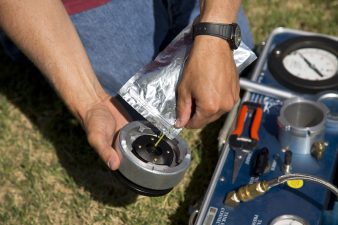
Using Data to Schedule Irrigation & Analyze Soil Moisture
Getting irrigation exactly right is one of the most important things that a pecan grower in the West needs to do. This is particularly true during the middle part of the season when we may see a couple of waves of natural fruit drop and the latter part of the season when the kernel develops....
Read more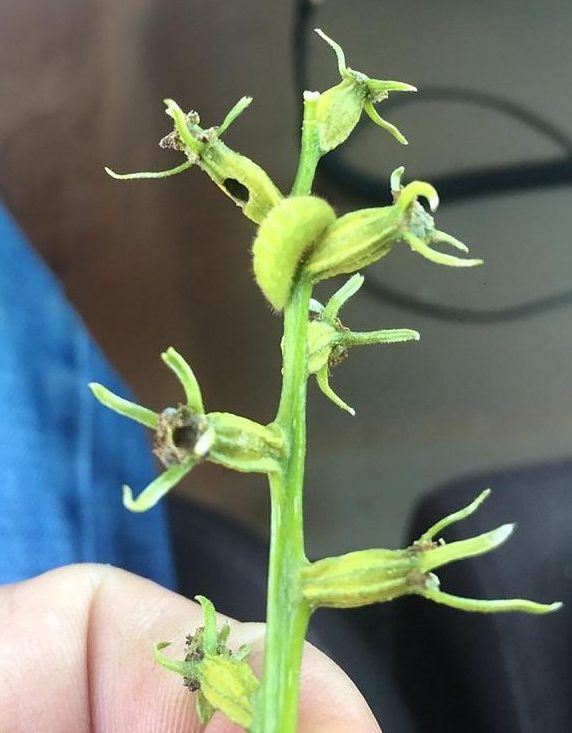
An Unusual Insect: Just a Pest, Not a Threat
There is always “firsts” in the business of Cooperative Extension duties. First time seeing this. first time dealing with that. Back in early to mid-May, just after most catkins were dried up and the pecan female flower pollinated, I experienced a “first” while making farm visits with a certified Pest Control Advisor (PCA) and Certified...
Read more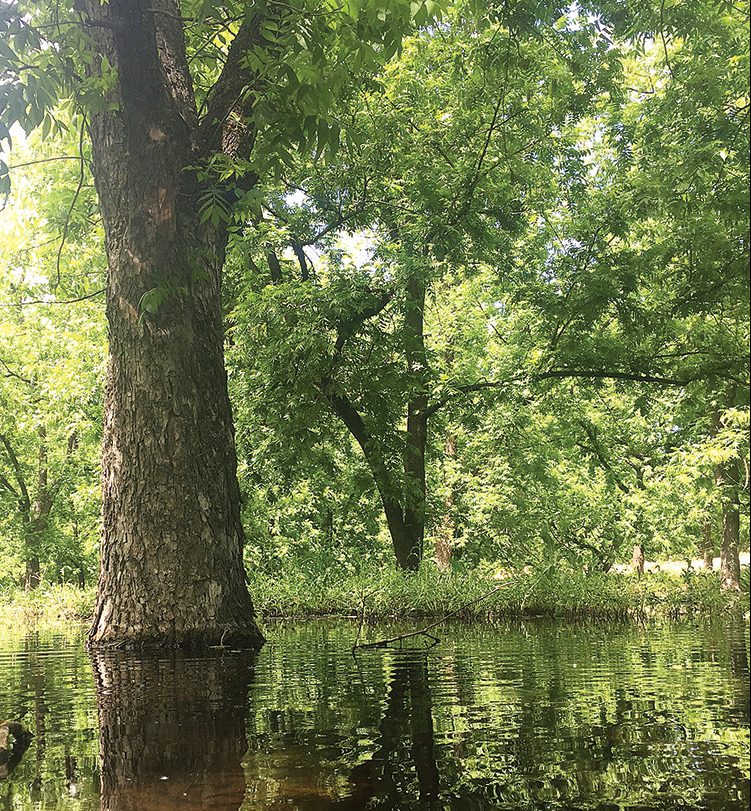
Seepage in California Orchards Offers Insights for Aquifer Recharge
We all know that orchards prefer well-drained soil with good soil aeration; so it would come as a jolt for any good orchard manager to see a 45-year-old pecan tree in over 18 inches of water for more than six weeks, with full foliage and good catkin development. The pictures shown with this article, taken...
Read morePecan Pollination: The Answer is Blowing in the Wind
We are rapidly approaching bloom in our pecan orchards in the western growing region. As I write in early April, catkins are already visible. It won’t be very long before we’ll see the female flowers start to appear as well — giving us a little glimpse of the cropping potential in our orchards in 2017....
Read moreTransitioning from flood to micro irrigation
Recently I gave a presentation on transitioning to micro-irrigation at the Western Pecan Growers Association conference in Las Cruces, New Mexico. I thought I would present the same information here so that I can expand further on some of these considerations and reach some growers who may have missed the conference but are considering this...
Read moreWinter rains (finally) impact California harvest
Normally, still having acres left to harvest at this time of year would see me in a state of perpetual panic and worry. However, this isn’t a normal year. As most farmers in the U.S. know, California has been in the midst of a crippling drought. Most California growers have been almost completely reliant on...
Read moreMechanical Pruning in the West
It has become abundantly clear in the past 10 years that mechanical topping and siding (hedging or mechanical pruning) is the best method currently available for light management in pecan orchards in the West. People have been experimenting with numerous different strategies for mechanical pruning for a very long time. In particular, I think we...
Read more
Bacterial Leaf Scorch identified in Arizona; Survey Launched
In late June of this year the University of Arizona Cooperative Extension’s Plant Pathologist, Dr. Mary Olsen, was contacted to come visit a problematic pecan tree in southeast Arizona. The symptoms on the leaf seemed to resemble a salt toxicity issue, with marginal leaf necrosis. However, through further investigation, it seemed that there were more...
Read moreSoil Zinc Applications in the West Can Work
One of the most serious challenges for pecan producers out here in the southwestern growing region is maintaining adequate micronutrient nutrition of the trees. Micronutrient imbalances are common with pecan trees everywhere they are grown, but they are particularly difficult to manage in the arid/semi-arid western U.S. because of the nature of the region’s soils....
Read moreManaging to reduce freeze injury risk in pecan orchards in the West
Summer’s almost here and the weather is getting very warm – so it may seem a little strange to some of you to have an article about managing freeze injury. But I think folks from eastern New Mexico and parts of western Texas will consider this to be a very timely topic, as they are...
Read moreThe “Other” Micronutrients
It is well known that most pecan orchards, especially out here in the West, require zinc fertilizers for normal leaf expansion, shoot growth, and nut production. And in the past five years or so, most pecan growers have become proficient at spotting the telltale signs of nickel deficiency. But very rarely do they discuss other...
Read moreStressing Out
No doubt a few of us have experienced firsthand how a “stressful” lifestyle — maybe worries about the economy or the kids — is bad news for our own health. Horticulturists and orchard managers also often speak about minimizing “stress” in our orchards so that we can maximize tree performance (and hopefully lower our own...
Read moreManaging Crowding of Orchards in the West
Pecan trees LOVE the light. That’s really all there is to it. In their native habitat, young pecan trees can rapidly grow to great heights if given a nice patch of sunlight — then once they’ve surpassed all the other surrounding trees in height, they’ve got it made in the sun, so to speak. But...
Read moreIrrigation Scheduling Using Soil Moisture Monitoring
I think just about everyone in the pecan industry already knows that maintaining water status in orchards is of utmost importance for consistently producing top pecan nut yields and top pecan nut quality. When trees become water stressed, photosynthesis slows, shoot growth stops, nuts drop, and the remaining kernels don’t fully fill—all bad things if...
Read more